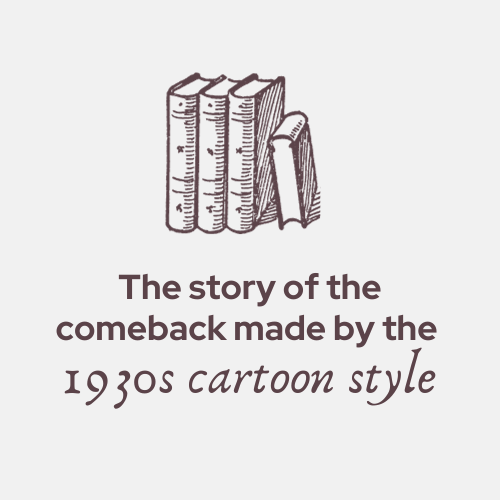The past has a strong hold on how we see and portray our world. The reason is simple and easy to understand – without the past, we would have no context for who we are. The funny thing is that even if we allow the past to stay in the past, sometimes it will come back to haunt us. Most often this happens in the art style that gets translated into the world of today. The way it gets translated varies, but the presentation can definitely be seen. In the case of the 1930s cartoon art style, the influence on today’s media is undeniable. The presence of the art style can be noted anywhere and everywhere. The videogame industry has had a quick and easy time adopting the art style for some of their most popular industry while the cartoon industry has picked up on some of the key elements of the past and brought them into modern color animation.
This time, though, it is hard to accuse nostalgia of making is the reason for the return of the art style into modern times. The case can be made for the 80s pop culture making it back to the modern world – after all, the people who grew up in the 80s are now the ones defining how the media looks. But it seems that the cartoon style of the 1930s has seen a renaissance in its presence across the board for a different reason.
Why the comeback
It seems like the many years since the creation of the style has been enough time in order for the majority of the media companies and even consumers to analyze the design a little. It is not nostalgia that is driving the comeback, but what seems to be a specific type of philosophy in terms of approaching animation and a desire for a certain type of aesthetic. The very first callbacks in might have been nothing but a reference to an aesthetic. After all, the 1930s cartoons are very eyepopping and uniquely entertaining to watch. You’ll appreciate what this is like if you watch Bugs Bunny episodes. Although, it is not the full designs that got copied, in terms of cartoons and animations, several specific design choices and trends. If you look at the current CalArts style of animation, where some of today’s favourite cartoons come from Adventure Time and Gravity Falls, you will see the elements that got copied. Big eyes, hand movements, the line technique and so on all became part of the modern animation. It seems that the referential nature of this type of animation is the direct result of nothing but the cartoons referencing their ridiculous origins. But also employing the techniques of the old where animation and cartoon world physics were not constrained either by realism or specific rules. Exaggeration and malleability seem to be coming back into vogue within the animation industry.
Furthermore, it seems that this kind of animation is much cheaper, simply because of it being so much less meticulous. The fact that shading and lining do not require hours, while the digitization of the animation is made easier, makes the entire process that much more cheap. As a result, we are seeing the reincarnation of the philosophy of animation that had initially been part of the cartoon industry – cheap, fun and malleable. The world of animation is no longer defined by specific rules but is allowed to act out all of the zany adventures and actions that the story and the intrinsic comedy of the genre requires.
The other media adopting the style
The adoption of this style within other media was not gradual. Videogames, both online and offline, were quick to pick up on the trend and take it as their own. As a result, we got games like cup head, which are making a direct copy of the original 1930s animation, with colour. This is only to the benefit of the game, as the style allows for the frenetic action that the game moves ahead with to become even more expressed and overtake the entirety of the game. Furthermore, the style allows for some pretty out of the world adventures, with the fun of the animation allowing the game to be self-aware in the way it alludes to its own drawbacks, issues or to its own hardness of gameplay. The added benefit of the cheap animation was something the developers and designers of the game enjoyed very, very much.
The same type of style can now be noticed in the casino industry as well. More and more games are getting images designed in a similar style, which is a testament to both the cheapness of the design as well as to the ubiquitousness of it within the popular culture of the US and the world.
The design is more than welcome in its comeback, but it is only our hope that it does not become a copy of what used to be. Instead, it is to be used, chewed and made into something new. Th current trends in cartoon animation seem to be doing just that – taking steps in order to develop animation with the help fo the 1930s style. But how far is all of this going to go? We cannot be sure. Let us just enjoy the temporary return of the 30s style.

